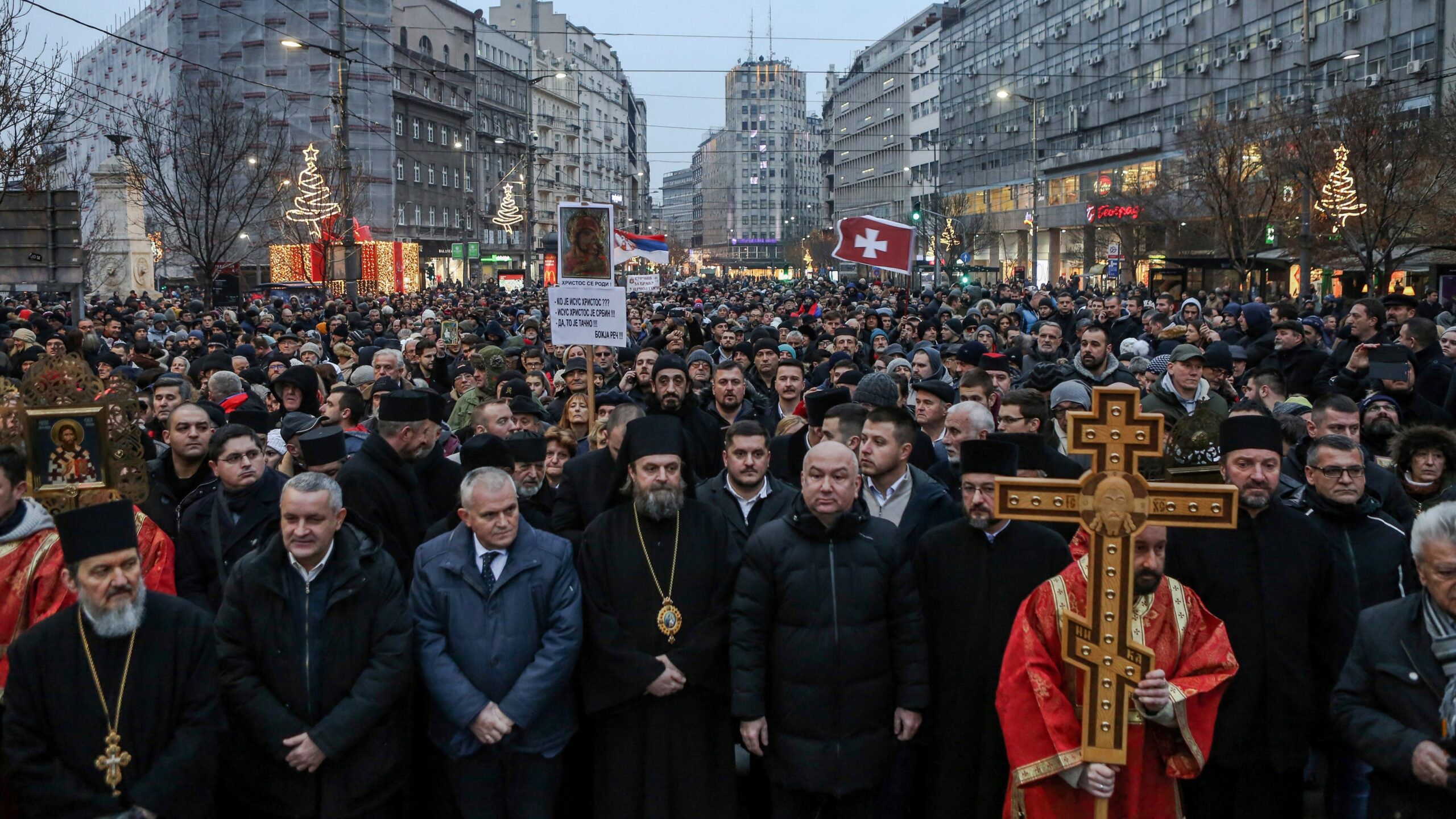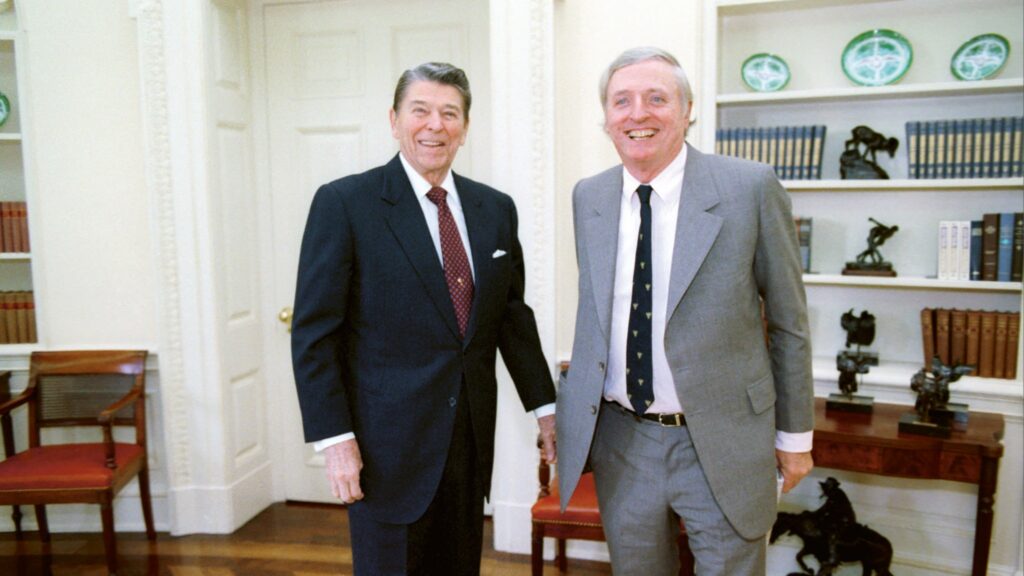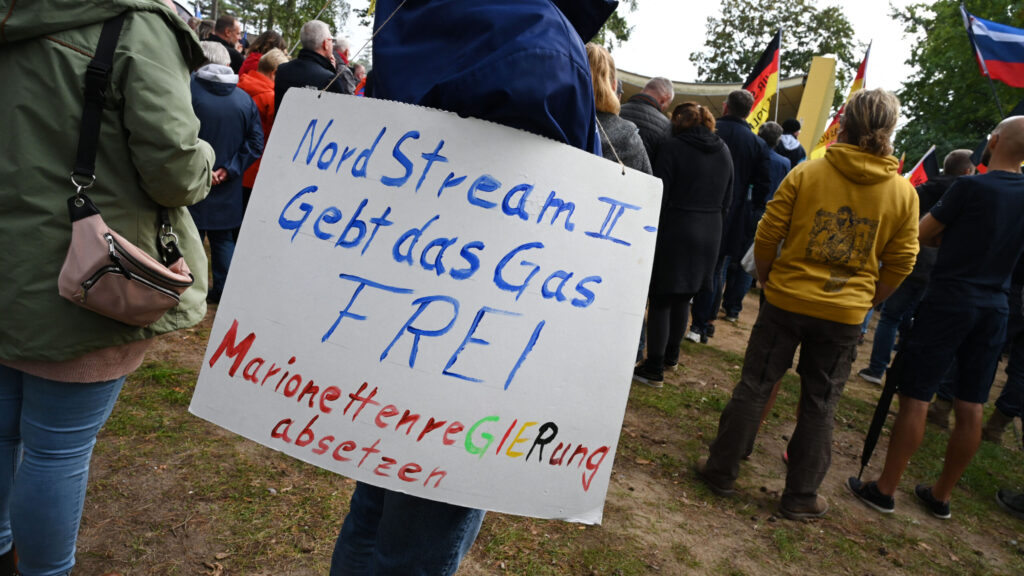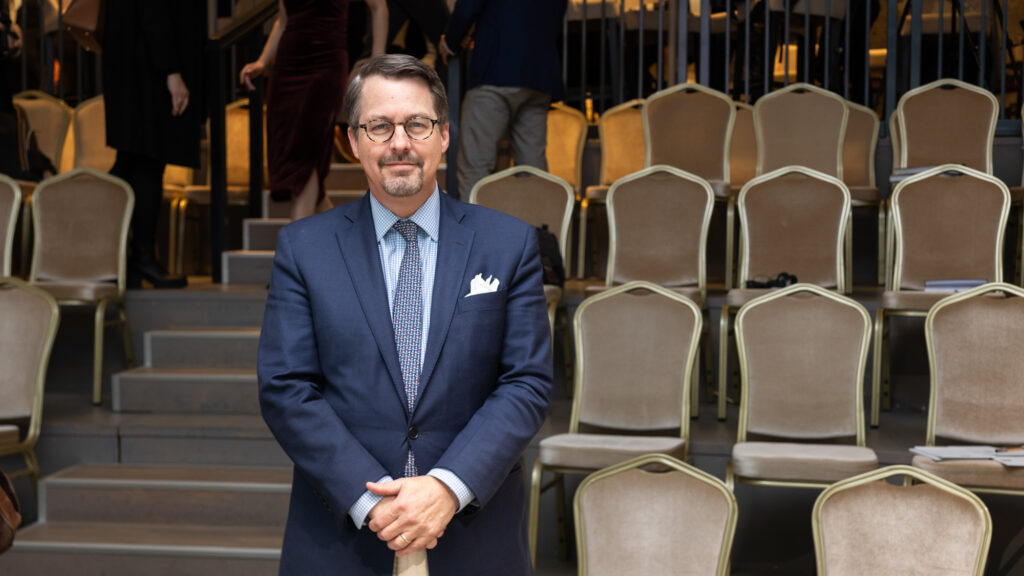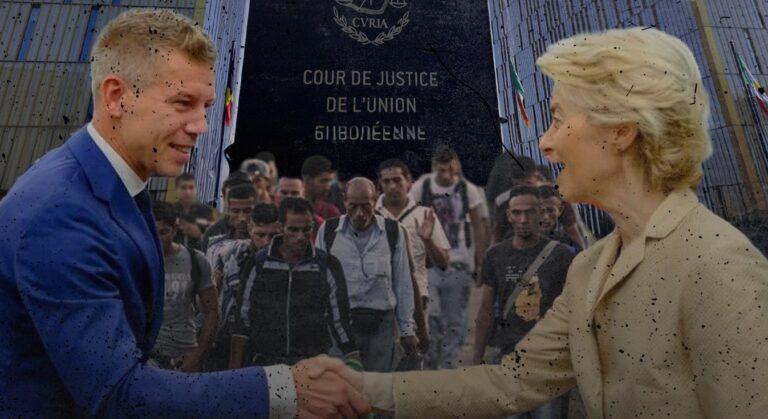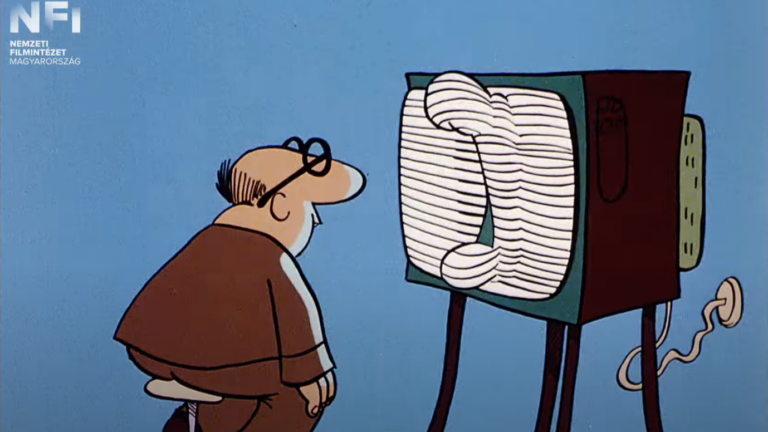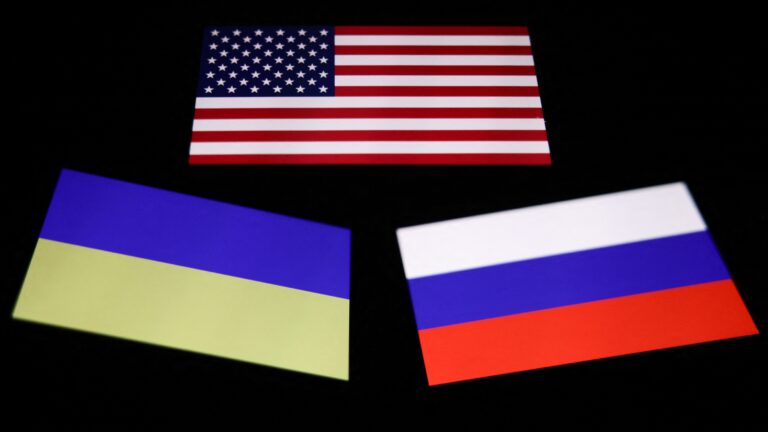Snow fell heavily from the skies on that cold January night. The strong Adriatic winds cut through the crowds that formed in front of the stone churches. On their hands, crosses, icons, banners, and flags—national and religious. Priests and bishops stood in the front row, leading the chants that the faithful, young and old, repeated as they marched through the main street of the town. As the night fell, a man carrying a large, decorated wooden cross walked in front of yet another group, all braving the thick snow and the heavy winds to reach the rest of the procession-goers in front of the church.
His picture would become one of the most emblematic symbols of the processions—a visual manifesto of faith, resistance, and loyalty to a Church under attack. Amongst the chants and prayers in Church Slavonic, one slogan, in Serbian, was repeated in unison by the crowd, with the same passion and devotion reserved for the prayers: Ne damo svetinje. We do not give up our holy places.
The ‘holy places’ in question were all the churches and monasteries in Montenegro that belong to the Serbian Orthodox Church. These churches, monasteries, and other real estate were now facing threats of expropriation by a government in power for 33 years, propped up by the West, and increasingly hostile to the Church.
In the months that followed, the processions grew larger, the Church hierarchy became more involved, and coordination between Church authorities and political figures on the issue solidified. Until, eventually, the government folded.
That snow-covered procession took place in Žabljak, a small, heavily Orthodox town in Northern Montenegro, in early 2020. On the weeks and months preceding it, tens of thousands of people across the country walked in the same way, led by their priests, in prayer and protest. These processions are known in the Balkans as Litije—a word that, in those years in Montenegro, became synonymous with Church-led protest. Though the rallies remained peaceful, as is typical of a religious procession, they vowed to defend their churches by any means necessary.
The threat they were defending their svetinje was a familiar one: the longtime government of President Milo Đukanović and his Democratic Party of Socialists (DPS). Specifically, in this case, a proposal for a new Law on Religious Organizations was introduced by the DPS. De facto, the new Law would allow for the expropriation of properties and assets belonging to any religious organizations that did not have a ‘Fundamental Agreement’ with the State.
At the time of the Law’s introduction, of all the main religious groups in Montenegro, only the Serbian Orthodox Church lacked such an agreement. For priests and parishioners alike, it was clear enough that the proposed law was aimed at them and served no other purpose than to weaken the Church while stopping short of banning it.
The crux of the issue, as often in the Western Balkans, was ethnoreligious. The Serbian Orthodox Metropolitanate of Montenegro and the Littoral, as the Church is officially known, is the largest Christian denomination in the country—and, for Montenegrin Serbs, a key part of their identity. By its own character as a historically and canonically Serbian church, it sees the overt Montenegrin nationalism of then-President Milo Đukanović with suspicion. Metropolitan Amfilohije, the Church’s longtime leader until his passing in 2020, had advocated for unity with Serbia in the 2006 referendum.
‘The Serbian Orthodox Metropolitanate of Montenegro…is the largest Christian denomination in the country—and, for Montenegrin Serbs, a key part of their identity’
Đukanović, who has ruled Montenegro since the 1990s, began his career as a Yugoslav politician before adopting a Montenegrin nationalist platform in the 2000s. He was the main proponent of independence, while the Church was seen as a leading force for unity with Serbia. Since the 2010s, he has also become the main proponent of social liberalism in the country. Meanwhile, the Church has remained steadfast in its commitment to traditional values.
To say relations between the two were thorny would be an understatement.
Nevertheless, for the first decade, Church and State managed to find an uneasy, détente-like cohabitation, both aware of the importance of such an arrangement for the preservation of the country’s sensible interethnic harmony. This peace lasted until 2019, when Đukanović, seeking an opportunity to solidify his increasingly Montenegrin nationalist discourse into actual policy, had the DPS introduce the Law on Religious Organizations.
This provoked a hostile response. Bishop Metropolitan Amfilohije and several opposition leaders accused Đukanović of attempting to undermine the denomination in favour of the unrecognized Montenegrin Orthodox Church—a small sect that promotes a Montenegrin nationalist line. Over time, the President himself admitted to wishing to establish a Montenegro-based church, using now-familiar rhetoric of the Serbian Metropolitanate’s existence as antithetical to Montenegro’s inevitably ‘Western’ path. Đukanović, by now used to political victories, counted on humbling Amfilohije in time for the 2020 parliamentary elections.
Montenegro had seen several protest movements against Đukanović in the past decade, often coinciding with electoral seasons. Though they succeeded in mobilizing large numbers of people, Đukanović always emerged triumphant at the polling station.
The Litije was the first movement to buck this trend. The Serb-led, Church-adjacent opposition benefitted the most from it.
The coalition’s candidate for Prime Minister, Zdravko Krivokapić, was widely seen as having been chosen due to his proximity to the Metropolitanate. The election was held on a tense September Sunday, shortly after the lifting of some COVID-19 restrictions. The Serb-led coalition of Krivokapić, a centrist list, and a progressive grouping led by Dritan Abazović, a young ethnic Albanian politician, emerged as the winners.
Đukanović’s DPS remained the largest party, though short of a Parliamentary majority. By the slimmest of margins, a non-DPS-led government could be formed for the first time in decades. Krivokapić’s government would be short-lived due to internal divisions and, within less than two years, Abazović would succeed him as Prime Minister. In one of those typically Balkan political ironies, it would be him, rather than the ‘anointed’ Krivokapić, to finally sign the Fundamental Agreement with the Metropolitanate and to amend the Law on Religious Organizations. Either way, the deed was done. The svetinje was no longer in peril.
A Lesson from Montenegro and the Littoral
The story of the Litije is almost unknown outside of the Western Balkans. This is true even in certain Western political circles that tend to be obsessively interested in any protest movements happening East of Vienna. Having frequented some of these circles for enough time, this has always struck me as, at best, an oddity.
‘This Church-led movement has proven to be the most defining political event in Montenegrin history since the country’s independence in 2006’
Besides the occasional smug coverage by ‘Balkan watchers’ who cry ‘clero-fascism’ at the sight of an icon, or the occasional awareness-raising effort by fellow Orthodox, the Litije were mostly met with indifference. Was it because of the peaceful nature of the protests? Unlikely. The complexities of the issue on the ground? Hardly. Or was it, perhaps, because the Litije were a thorn in the side of these professional protest-watchers, a successful, grassroots movement started not by a liberal, Western-funded ‘civil society’, but by the Orthodox Church? One could not make up an ‘anti-colour revolution’ in a laboratory even if one tried. And yet, five years on, this Church-led movement has proven to be the most defining political event in Montenegrin history since the country’s independence in 2006.
In a country considered to be the frontrunner for EU membership, the Church took on a semi-authoritarian government, mobilized the population and chose confrontation over passive acceptance of draconian laws.
And it won.
The Litije could easily be dismissed as a specifically Montenegrin or Balkan phenomenon. Montenegro is one of the most religious countries in Europe, perhaps in the entire Christian world. It would be only natural that the Church would have this much social capital and political influence—enough to topple even a government as entrenched as that of Đukanović. Nor do all European or Western churches have leaders as respected and admired by a large segment of the population as Amfilohije and Joanikije. To an extent, this is true. Even as we witness a slow but steady Catholic revival across Europe, any Archbishop to the West of Vienna would be lucky to attract a few thousand parishioners to a political rally—and this in good weather.
And yet, what is most fascinating about the Litije is not their victory against Đukanović, or their success in preserving ownership of their churches. It is, rather, the extent to which the procession-protest movement has contributed to a revival in religiosity and Church presence in Montenegrin society.
As a Catholic in Europe, any successful stories of religious revival are of vital interest. Any well-informed Catholic will be familiar with the case of Poland, Catholic Europe’s best-known case of a Church coming from the depths of Communist repression to near-unprecedented political and societal influence. The Polish case, similar to the Montenegrin one, was rooted in resistance, and, though it endured well into the 21st century, replicates certain generational and geographical trends observed elsewhere in Europe. Younger Poles, though more religious than their Western European peers, are less so than their older fellow citizens. Rural Poles tend to be more religious than urban ones, though thriving congregations exist in all major Polish cities and, during times of difficulty, they have shown themselves open and willing to come out in defence of their Churches.
‘As a Catholic in Europe, any successful stories of religious revival are of vital interest’
Living in Budapest, a mostly liberal capital of a mostly conservative country, I have witnessed similar dynamics myself. Furthermore, as has been the case across Europe, it is in the most traditionalist parishes that this rejuvenation and revival are the most apparent. In all three cases—Montenegro, Poland, and the burgeoning traditional parishes of Europe—a common search for a value system and the defence thereof can be observed.
Reflecting on the issue, Miša Đurković, a Serbian scholar and good friend living in Budapest, described the Litije as a movement that helped rejuvenate and re-centre the Church, much of it thanks to the assertiveness of its leadership. Were it not for Amfilohije’s and Joanikije’s willingness to stand up for the Metropolitanate, its values, and its heritage, Đukanović would likely still rule in a much more forcibly secular Montenegro.
The mantras of liberal secularism, proclaimed by the same elites that so gleefully attack Christian institutions from political pulpits, dictate that Churches are only ever allowed to respond in milquetoast statements calling for ‘dialogue’. With the Litije, the Church transcended its strictly religious role and took on both an assertively pastoral role and an openly political one. From the organization of the first Litije to the coordination with political and civic actors, culminating in the up to 60-thousand-strong marches in Podgorica preceding the election and the ‘anointing’ of the anti-Đukanović opposition by Amfilohije, the Metropolitanate reclaimed a role that had been denied to Christian churches in Europe for at least three decades—and, in Western Europe, since the 1950s.
Therein lies one of the greatest and least spoken victories of the Metropolitanate. In today’s Montenegro, being at least on good terms with the Church is a sine qua non for political viability. Milojko Spajić, the current Prime Minister, offers us the best example of this new reality. Spajić was elected under a centrist, technocratic platform, focusing on European accession and economic growth, in a new party named Evropa Sad—Europe Now, in Serbian. He is, nevertheless, recognized as close to the Metropolitanate, having worked for the Serbian Orthodox Church in Washington before entering politics. Within his party, many MPs are either members of Orthodox organizations or linked to the Metropolitanate by personal ties. In Parliament, the new Speaker is Andrija Mandić, the historical leader of the Serb-led opposition.
Reflecting on the general state of the Church in Montenegro, Miša, the Serbian scholar, defines it, with pride, as ‘alive and lively, like few, if any, in Europe’. Certainly, like none in the European Union. In a continent where the Western half closes its churches, faith seems ever more alive in the former Communist East. Five years on, Montenegro ne da svetinje.
Related articles:

